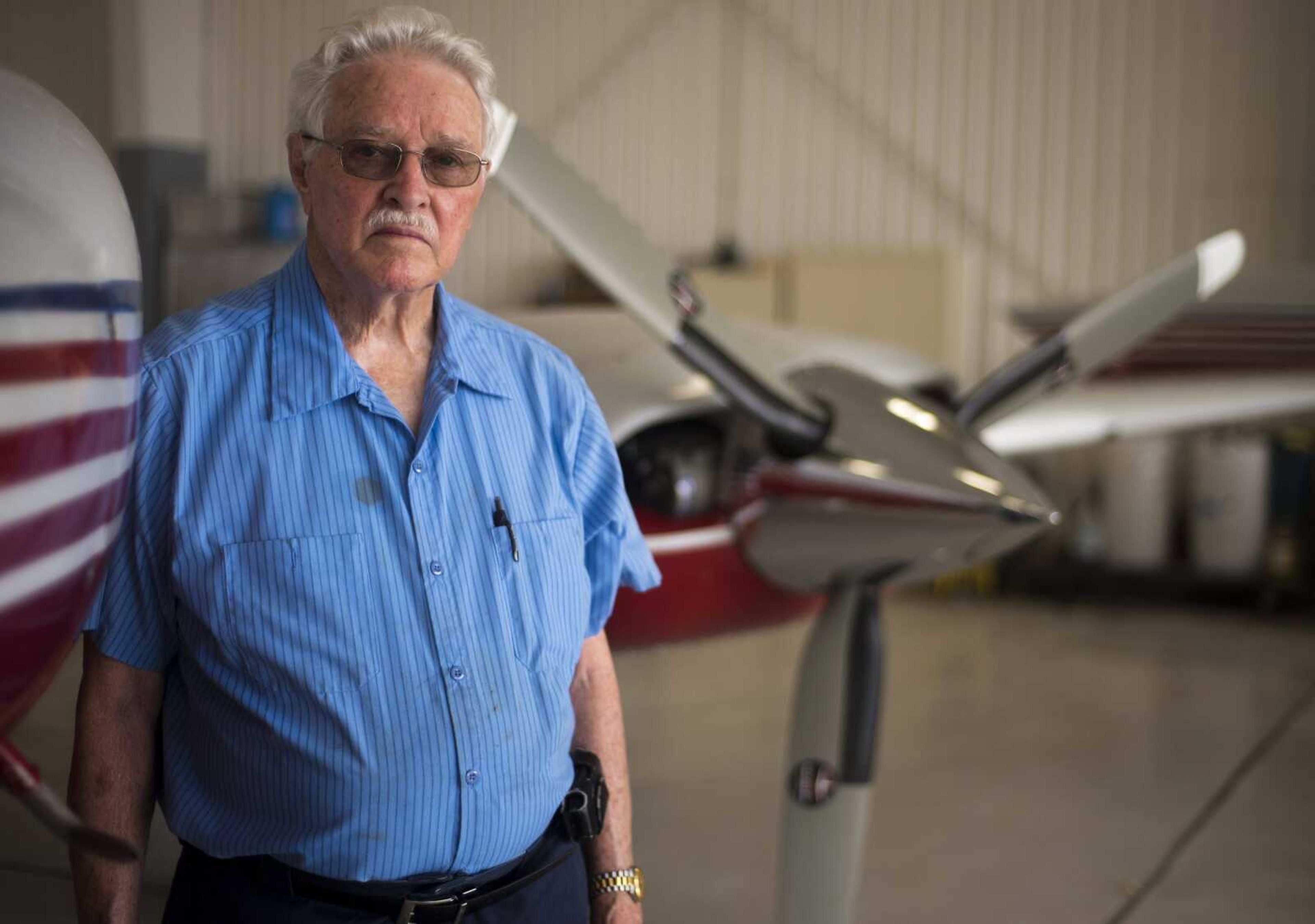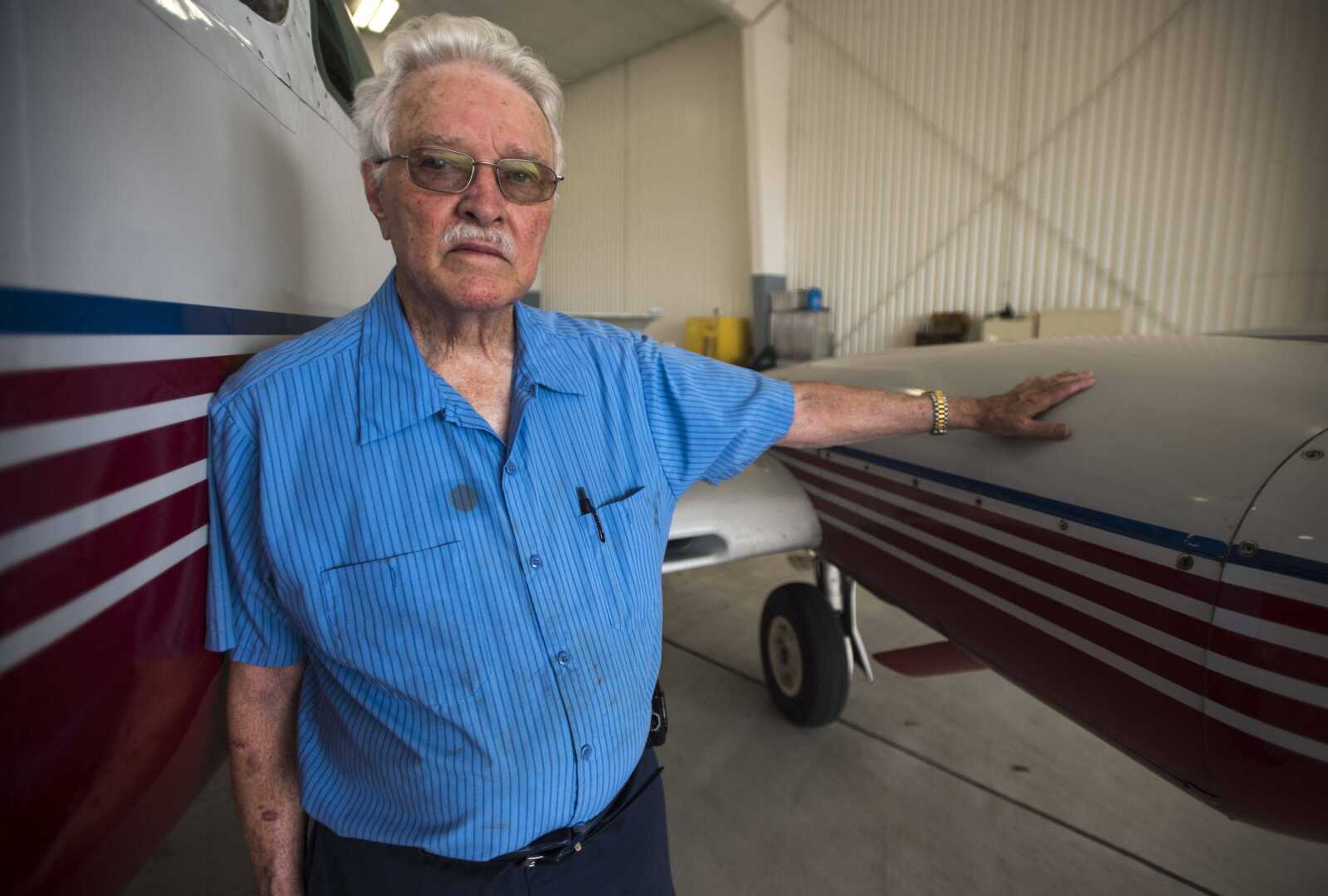Retired Air Force aviation technician Roy Sale discusses longtime career in business of flight
Roy Sale uses the word "migration" quite often when he speaks about his life. A term often associated with birds, "migration" is the 83-year-old's choice for his arrival in Cape Girardeau. Without question, he's devoted enough time to air travel to apply the use...
Roy Sale uses the word "migration" quite often when he speaks about his life.
A term often associated with birds, "migration" is the 83-year-old's choice for his arrival in Cape Girardeau. Without question, he's devoted enough time to air travel to apply the use.
He served 20 years as an aviation technician with the U.S. Air Force, and recently retired after 65 years in aviation.
He accumulated 10,850 hours of flight time while in the military. That's more than a full year with his feet off the ground -- 452 days.
His family also has a history in aviation, with one older brother a gunner on a B-24 during World War II and two of his offspring serving in the Air Force -- 20 years for his daughter, Yvonne, and three years for son, James. His late wife, Verna, to whom he was married to for 29 years, was cousin to astronaut Linda Godwin.

Sale also migrated while in the military, having been stationed in seven states: Texas, Alaska, Washington, California, Georgia, Oklahoma and South Carolina.
"It was hard on the family, but I enjoyed it," says Sale, who retired in 1972 with the rank of Master Sergeant.
Sale was raised on a farm that grew cotton and beans in Clarkton, Missouri, where he began driving a tractor around the age of 13 and migrated toward engines, both tractors and cars. After graduating from Holcomb High School in 1952, he enlisted in the military during the Korean War, choosing the Air Force.
"I had some friends that had been in the Army, so I knew they got shot at," Sale says.
An aptitude test pointed him toward mechanic and flight engineering schools.

He first became a mechanic on the four-engine B-29, the plane which carried out the two atomic-bomb missions against Japan that ended World War II. He was soon monitoring the complex array of needles and dials on the instrumentation panel in the B-29 cockpit.
"Oil pressure, RPM, generators, alternators, everything. Anything that pertained to an engine operation," Sale says.
There were always two flight engineers and two pilots aboard each flight, with the on-duty engineer always on the right side of the cockpit behind the pilot.
"The pilot had one set of throttles, and that's all he had up there, and the rest of it was avionics," Sale says.
Sale did pre-flighting of the aircraft to make sure it was "air worthy" before the pilots climbed aboard and reported any in-flight problems to maintenance after flights.

His job basically was monitoring the plane's heart, a duty which he performed in all 50 states, South America, Africa, Europe, the Middle East and Asia. He did so aboard four-engine planes of all sorts -- bombers, weather reconnaissance, cargo and air refueling tankers. He says it took six to eight weeks of training to transfer from one type of plane to another.
"The only thing that was similar is that it had four engines," Sale says.
He served in that capacity in Vietnam, where cargo and troops were flown in and out. Injured troops were among those transported to Japan.
"To my knowledge I never got shot at," Sale says.
One of his more harrowing moments came while flying a weather reconnaissance mission near the north pole, where samples of arctic air were taken to gauge the strength of atomic bombs tested by Russia.

One of the four engines caught fire and the crew was given the option of abandoning ship or parachuting into minus-40 temperatures outside.
"I had a parachute, but I still didn't want to go out of that airplane," he says with a smile and a shake of his head.
Two engines were lost in another flight going into Kodiak, Alaska, but he calmly notes, "We were still safe." He says he considered it just part of the job.
He remembers his life getting easier in June of 1967 when the C-141 was employed. It was a luxury plane of sorts, his first with jet propulsion.
"It was much easier and comfortable," Sale says. "They were all pressurized, because a lot of the airplanes I flew were unpressurized."

His final three years of service were as an instructor at the flight engineer and ground school.
With the end of his military career on the horizon, he received his aviation mechanic license in 1969, which made for a softer landing when he retired at the age of 38.
"Well, I didn't know anything else," Sale says about becoming a civilian aircraft mechanic. "I just sort of migrated to it."
He said he never really had an ambition to become a pilot. "I'd flown for 17 years so I just didn't feel like it," Sale says.
He worked on private planes for SEMO Aviation in Malden, Missouri, for 11 years, then married Verna, moved to Cape Girardeau and worked for Cape Central Airways.

He later worked for the Federal Aviation Administration as a safety inspector for six years in Nashville, Tennessee, and eventually returned to Cape Girardeau, retiring in 2016 from Ozark Aircraft Maintenance.
He received the Charles Taylor Master Mechanic Award in 2003, recognizing 50 years in aviation and 30 years with an A&P license.
He says he has no preference for flight engineer in the military or as a mechanic in civilian life.
"I enjoyed both of them," Sale says. "It was really, really interesting."
Connect with the Southeast Missourian Newsroom:
For corrections to this story or other insights for the editor, click here. To submit a letter to the editor, click here. To learn about the Southeast Missourian’s AI Policy, click here.










